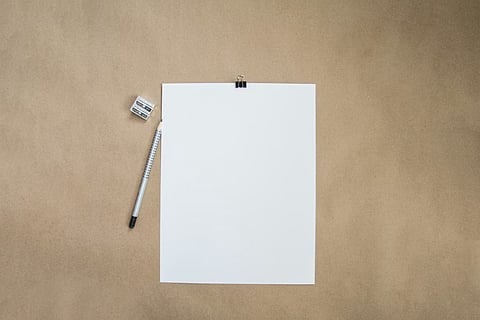

If you hold a sheet of paper up to the light, it looks almost weightless — thin, soft, and easy to tear. Yet this simple material has carried knowledge, shaped cultures, changed governments, recorded discoveries, and preserved the memories of entire civilisations. Paper feels humble, but its influence runs deeper than most inventions in human history. The story of paper is, in many ways, the story of how humans learned to share ideas with the world.
Long before paper took its modern form, people searched for ways to store information beyond the human voice. Ancient Sumerians pressed symbols into wet clay. Egyptians smoothed strips of papyrus into scrolls. The Chinese used silk and bamboo, carving characters that took hours to complete and even longer to store. All of these methods worked, but none of them were easy to make in large quantities. Knowledge existed, but it travelled slowly.
Around AD 105, a remarkable shift began in China. A court official named Cai Lun experimented with everyday materials — bamboo, hemp, old fishing nets, bark from mulberry trees — and began breaking them down into fine fibres. He mixed the fibres with water, pressed the pulp flat, and let it dry under sunlight. The result was a thin, flexible sheet that was smooth enough to write on and cheap enough to produce in large numbers. For the first time in history, information could be copied and shared with speed. This invention quietly set the world on a new path.
Paper did not travel far at first. For centuries, China guarded the method closely. Only through trade, curiosity, and the movement of people did paper begin to spread. It reached Korea and Japan, where new techniques and artistic styles emerged. Then it travelled west along the Silk Road, crossing deserts and mountains until it reached the Islamic world. By the 8th century, paper mills in Samarkand and Baghdad were producing sheets that scholars used to record mathematics, astronomy, medicine, poetry, and more. Knowledge flourished because writing became easier, faster, and far more accessible.
From there, paper continued its steady journey into Europe. At first, it was viewed with suspicion. Parchment, made from animal skin, was considered more prestigious. But paper was cheaper, lighter, and easier to produce. It quickly became the preferred material for letters, art, maps, and manuscripts. When Johannes Gutenberg invented the printing press in the 15th century, paper met its perfect partner. Together, they sparked an explosion of information. Books, once rare and expensive, became objects that ordinary people could own. Ideas spread quickly, new schools opened, and scientific thinking grew stronger. Without paper, the printing revolution would never have taken hold.
Over the centuries, paper shaped everyday life. Contracts, newspapers, passports, banknotes, notebooks, exams, novels, and even simple grocery lists exist because of it. When explorers travelled across oceans, they carried maps on paper. When scientists discovered new planets or new medicines, they recorded their findings on paper. When poets poured out their emotions, they did it on paper. Even today, when screens have become a major part of our lives, paper continues to hold a unique power. A page feels personal, immediate, and calm. It does not blink, ring, or refresh. It simply waits to be filled.
But the story of paper also includes the forests that make it possible. Modern paper is often produced from wood pulp, and this has raised important questions about sustainability. Millions of tonnes of paper are used each year, and not all of it is recycled. Forests play a vital role in cooling the planet, storing carbon, protecting wildlife, and maintaining rainfall. As countries grow, the demand for paper grows too, and this puts pressure on natural ecosystems.
Thankfully, new solutions are emerging. Sustainable forestry practices allow trees to be replanted faster than they are cut. Recycled paper reduces the need for fresh wood and cuts down on energy use. Innovative materials like sugarcane bagasse, agricultural waste, and bamboo offer alternatives that are more environmentally friendly. Many companies are shifting towards chlorine-free processing and eco-certified sources. The goal is not to eliminate paper, but to create it responsibly.
Today, paper exists in many forms — glossy magazines, recycled notebooks, tissue, packaging, currency, wrapping sheets, cardboard, sticky notes, and more. It has adapted to the needs of every era, from ancient scholars to modern classrooms. And although digital technology will continue to grow, paper will not disappear. It has survived wars, revolutions, inventions, and even the rise of the internet. It remains one of the most powerful tools ever created for learning, communication, and creativity.